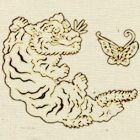I had been studying a handful of martial arts and thought I knew the future path my martial training would take. I was training in Taekwondo for kicking skills and in Kung-fu for hand skills. At the time I did not think it strange that I had to train in two unrelated martial arts just to cover a full range of striking skills. Besides, the kung-fu forms looked cool, and I suppose that seemed important to me at the time.
In 1982 I had the opportunity to take part in a training camp hosted by Stephen Hayes. I thought the training would be mildly interesting, giving me a look at training with some unusual weapons, but I never considered I would continue training in the Bujinkan because I had already trained in the Japanese martial arts of Judo & Karate. Those martial arts seemed very limited compared to the arts I was then training in, and I assumed the unarmed skills in the Bujinkan would be similar. The surprise for us all was the guest instructor of the training camp was Hatsumi Masaaki, the soke of the Bujinkan.
Was I ever wrong! Karate and Judo are not old bujutsu arts of Japan’s warriors and it was a big mistake to assume those two arts represented the unarmed skills of the Samurai and Ninja. The training I experienced at this training camp was completely different from what I had expected. Hatsumi sensei’s techniques were dynamic and he demonstrated time and time again he could quickly incapacitate an adversary and hold him restrained, preventing further attacks. My mind was blown!
It was as if my martial training up to that point in my life, in various martial arts, could all fit inside a rectangular box that represented ‘standard’ martial skills. Everything was ‘conventional’, and despite minor differences in ‘style’ of movement, all of the arts were essentially the same methods: block, punch, kick and beat your opponent into submission before he can knock you out. Everything I knew or had seen in other martial arts fit easily into that big box. What I learned at the training camp was that there was a door in that box. Hatsumi sensei opened the door and showed me a whole new world of insight that existed outside that box: the world of professional warrior arts of the samurai and the ninja.
Previously I had assumed that all life threatening situations were fights in which you struggle to beat your opponent before he beats you. To aid in this ‘fighting’ one needs to train like an athlete to have strength, speed, & stamina. What I learned from Hatsumi sensei is that an older man can defeat a younger and more fit man, not by ‘going the rounds’ with him, fighting toe to toe in a struggle, but by manipulating the opponent and getting him down to the ground where he can be restrained so that he can no longer fight back. Hatsumi sensi handled situations faster, and with more graceful ease than I had ever seen any martial artist do. Ever.
Hatsumi sensei was not struggling with his opponents as you might imagine wrestlers locked in tense grips straining every muscle to over power the opponent. Hastumi sensei was effortlessly applying techniques that took advantage of the opponent’s position, balance, and timing. Rather than rely upon the strength & speed of his muscles, he was perceiving what was going on so quickly that he was able to ‘cheat the situation’ and apply a technique before his opponents could bring their strength and speed to bare. His perception was faster than their muscles and it gave the impression that his opponents never had a chance.
I didn’t know it beforehand, but that was exactly what I was looking for all along! It makes no sense to rely upon the physical fitness of your body, which will grow old and weak, because there will always be someone who is faster or stronger. The key is to use experience to defeat brawn. The efficiency of defeating your opponents through perception rather than relying upon the twitch speed or strength of your muscles was glaringly apparent and I was converted. Right then and there I completely gave up pursuing the other martial arts and from that day forward I only trained in the warrior arts of the Bujinkan.
Years later and after much training, I was doing security work and I was often in violent encounters with felons who resisted arrest. Even though I was attacked many times, I was never hurt, not even a little bit, not even once. I used the techniques I learned in the Bujinkan to overcome felons that were stronger, faster, and meaner than I ever was. For me this was proof that the centuries-old warrior techniques of the samurai and the ninja worked just as well in the modern world as they had on the battlefields of old Japan. I found the warrior arts that were right for me due to a chance encounter with the soke of the Bujinkan.
Dojocho
Bujinkan Kocho Dojo
